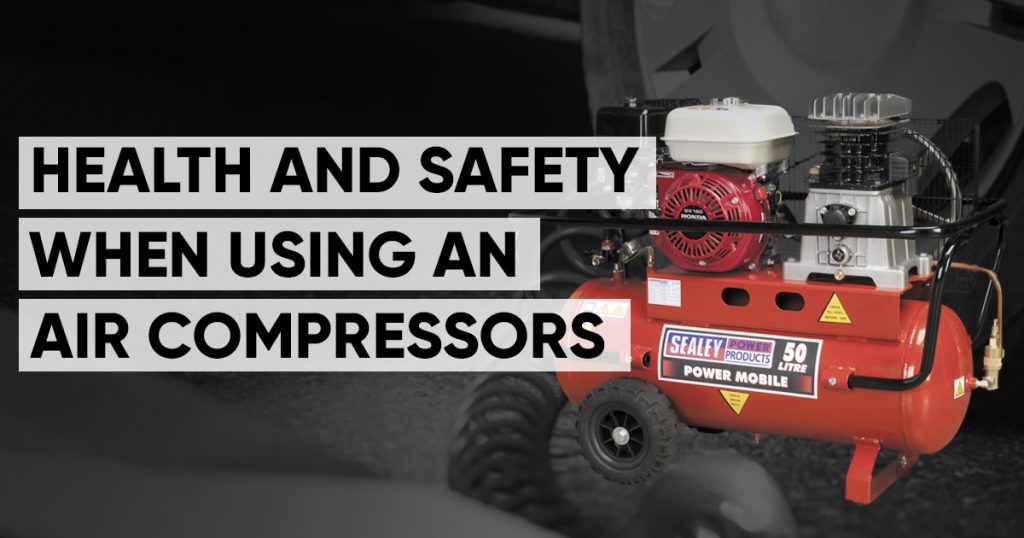Air compressors and the dangers
Air compressors do exactly what it says on the tin – they compress air. There are three main categories of air compressors: low pressure (typically no more then 150 psi), Medium pressure (less than 1,000 psi) and high pressure (greater than 1,000 psi). They can be powered by electricity, by petrol or by other kinds of energy. They come in all shapes and sizes. They can also all do you a great deal of harm if you don’t follow proper safety procedures.
Here are a few safety tips to follow when working with air compressors. However, you should always read a machine’s manual in detail before using it. If the manual contradicts this list in any way, the manual is almost certainly correct. Follow it, not this list. If you don’t have a copy of the manual, seek out its manufacturer online. Most offer free pdf format safety manuals, or can ship you a paper copy.
Never use petrol-fuelled air compressors indoors.
Indoor air compressors are almost all electric, as that type does not produce toxic fumes. The exhaust of a petrol fuelled air compressor will contain carbon monoxide, carbon dioxide, and a range of other chemicals that you have no business breathing. Only ever use petrol powered equipment is very well-ventilated areas!
Wear your PPE.
Check the compressor’s manual for specifics, but you should never really operate any type of air compressor without sturdy gloves and impact resistant eye protection. Pressurised air (and the small particles it can blow into your eyes at high speed) is not to be trifled with.
Check out the government guidelines on Personal Protection Equipment.
Use self-retracting cords and lines when they are available.
Cords and lines let on the floor can be a trip hazard, and make uncertain footing at the best of times.
Use only approved, undamaged nozzles and attachments.
Poorly made, poorly maintained or damaged nozzles and pressure attachments can ail suddenly, releasing a great quantity of compressed air and sharp fragments, potentially causing substantial injuries.
Check for oil leaks.
Most compressors rely on internal oil reservoirs to keep their moving parts lubricated and t keep their seals airtight. If you detect an oil leak, stop using the compressor and have it seen to by a certified repair person.
Check for air leaks, especially in hoses and attachments.
Even a pinhole leak which doesn’t noticeably degrade the air compressor’s performance is a potential failure point. Never use a hose or attachment which has even a tiny air leak, and the same goes for the air compressor unit itself! Take either to be repaired.
Lastly, follow the air compressor’s manufacturer’s maintenance and servicing schedule.
Your manual will have more specific details, but at a bare minimum you should check the device for safe operating temperature, change its oil regularly, and check its differentiated pressure levels in operation once a year.

